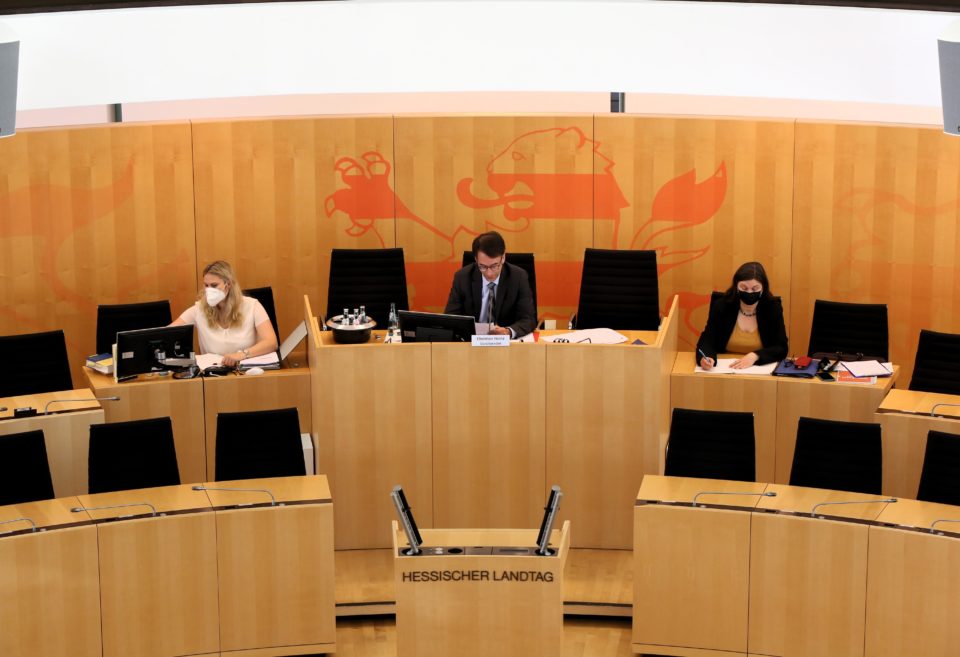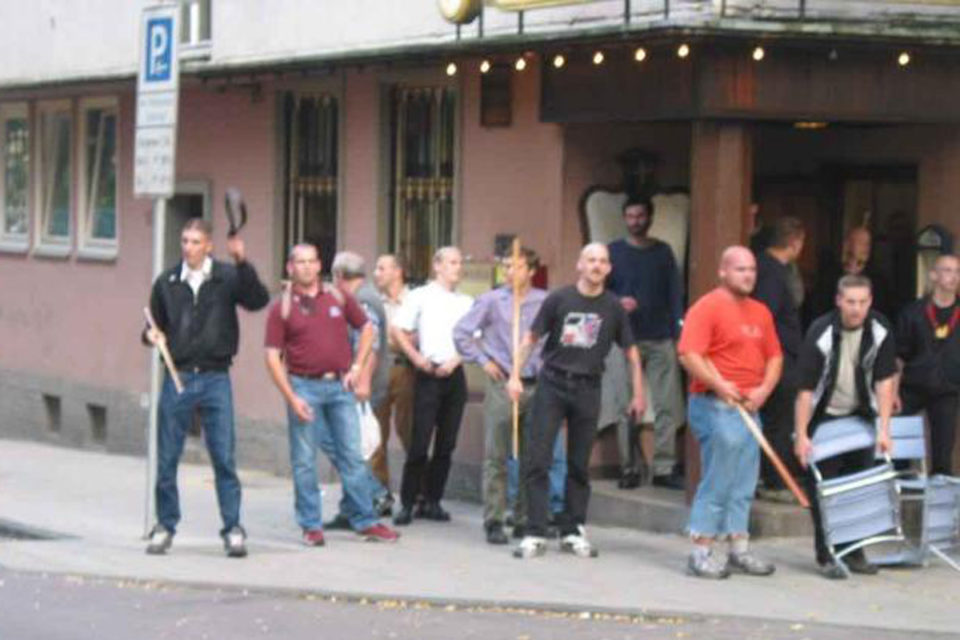“What did the right-wing extremist scene in Northern Hesse look like??” – this question was the focus of the first public meeting of the committee of inquiry into the murder of Walter Lübcke in the Hessian state parliament. In the committee, the political environment of Stephan Ernst and Markus Hartmann is to be clarified and any misconduct by the security authorities to be determined.

Nine months have now passed, since the Hessian parliament unanimously decided to set up a committee of inquiry into the right-wing assassination attempt on the CDU politician Walter Lübcke. The start of the work of the committee was due to January 2021 delayed, because the MPs were still waiting for the files from the trial against Stephan Ernst and Markus Hartmann. After the judgment am 28. The parliamentary review should begin on January 1st.
Questions should be clarified, which hardly played a role in the process: About, why Ernst and Hartmann have been working for the Hessian Office for the Protection of the Constitution 2009 as “cooled down” were valid, although Ernst, for example, still 2011 a solstice celebration by NPD- Functionary Thorsten Heise visited and later became involved in the AfD. Also to what extent the two neo-Nazis were still integrated into the Kassel scene in the years before the murder, is in focus. The left politician Hermann Schaus, deputy. Chairman of the committee, hopes, that one here “Light in the dark” can bring.
Right-wing extremist scene in Northern Hesse
The Kassel Nazi scene was therefore also the focus of the first public meeting of the investigative committee. The freelance journalist Joachim Tornau was invited as an expert, Kisten Neumann from that mobile advisory team Hessen and the so-called extremism researcher Rudolf van Hüllen.
Tornau, who has been working on the right-wing scene on site with his colleague Carsten Meyer for decades, estimates the hard core of the scene in northern Hesse at approx. 100 people. Accordingly, it is manageable and primarily shaped by personal acquaintances of long-time active people. This also shows another characteristic of the scene. I have this since soon 20 Years of amazing personal constancy, which Tornau traces based on selected protagonists. In particular after the loss of the Free Comradeship Kassel there is, apart from the Germania fraternity, but hardly any solid structures.

Nevertheless, the Kassel neo-Nazi scene is well connected nationwide. The decisive factor is the traditional contact to Thuringia for neo-Nazi multifunctional Thorsten Heise. Also the Section of the terror network Combat 18 around the former Kassel neo-Nazi Stanley R. proves, according to Tornau, the integration into nationwide neo-Nazi structures.
These right-wing terrorist efforts also highlighted another feature of the scene: the high propensity for violence. A long list of acts of violence reported by Tornau unfortunately confirms this statement.
“This is also why the supporters of the right-wing extremist scene in Northern Hesse do not attract attention, because that, what they say and think, partially corresponds to that, what is also said and thought in the middle-class environment.”
Joachim Tornau
Still, it's important, the right-wing scene does not turn out to be a parallel universe of combat boots, Imagine baldness and violence. The majority of the followers are well integrated into society after Tornau; they are members of volunteer fire brigades, Rifle clubs or fair fraternities. The world of the Lübcke murderer also fits into this picture: no neo-Nazi underground cell, rather AfD round tables, right colleagues and a shooting club, by doing “everyone had something against the refugee policy”, formed the starting point for his act.
“Those affected are experts themselves”
As the second expert, Kirsten Neumann from the mobile advisory team against right-wing extremism placed the issue in a larger social context. She stressed, that those affected by right-wing violence do this more often – unlike majority society and security agencies – would classify as terrorist acts. People, that do not fit into the right-wing extremist worldview, would know, that the acts would, among other things, serve to intimidate and that their existence should also be included in the case of alleged individual acts.
The relatives of the NSU victim Halit Yozgat organized a demonstration after his murder, who wanted to draw attention to the possibility of a right-wing terror series – while the media is still from “Doner kebab murders” and the Office for the Protection of the Constitution was sitting in the Yozgats Internet cafe during the murder.
“There is an uncertainty among those affected about this, how much state is behind the right-wing extremist structures in northern Hesse. This leads to a mistrust of the people towards the state authorities.”
Kirsten Neumann
With the exception of the AfD, the members of all parliamentary groups showed a common interest in clarifying the background to the Lübcke murder through targeted inquiries, at least in this first meeting. Whether this continues in the course of the investigation committee or whether there will be political confrontations as in the Hessian NSU investigation committee when the question of the role of the executive authorities is concerned, remains to be seen.
The future meetings want the anti-fascist initiative NSU-Watch continue to accompany them with regular reports. At the first meeting this stated:
"We know, that - contrary to all promises - we cannot rely on state institutions, when it comes to, to enlighten and prevent right-wing terror. We will therefore be closely following the parliamentary investigation into the murder of Walter Lübcke.”
“NSU-Watch”
The next public meeting of the committee of inquiry will take place on 23. April 2021. Participation by visitors is again possible here with advance registration and a corona rapid test on site.
